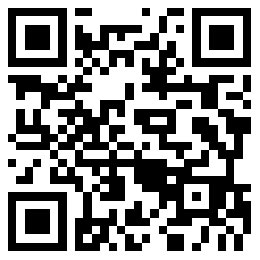如何跨越現(xiàn)實和夢想之間的鴻溝
|
????我們當(dāng)中有許多人在想要行動和采取行動之間搖擺不定。前方未知的道路充滿變數(shù),,令人望而卻步,。有時境況仿佛與我們處處作對,我們發(fā)現(xiàn)自己寸步難行,。 ????鮑勃?薩頓和杰弗里?普費弗教授將企業(yè)文化中的這種猶豫稱為“知行差距”,,也就是我們知道自己應(yīng)該做的事與我們實際做的事兩者間的差距。當(dāng)空談取代了行動時,,“知行差距”可能會導(dǎo)致公司的癱瘓,。 ????了解到知行差距之后,我們會發(fā)現(xiàn)它在生活中無處不在,。比如,,我們曾在伊士曼柯達(dá)公司(Eastman Kodak Company)親眼見到它的存在。20世紀(jì)90年代中期的一個寒冷的春天,,艾迪歐公司(IDEO)的一個小組來到紐約州羅契斯特市,,參觀柯達(dá)管理團(tuán)隊,。在那里,我們發(fā)現(xiàn)這個領(lǐng)袖團(tuán)隊具有淵博的專業(yè)知識,,他們至少在理性上知道,,攝影的未來將是數(shù)字化。 ????回顧往事,,商業(yè)史學(xué)家很容易將柯達(dá)失敗的原因歸結(jié)為管理層太過天真,。但事實并非如此。實際上,,我們必須加快速度,,才能跟上柯達(dá)的首席執(zhí)行官喬治?費舍爾那活躍的思路。沒人能說柯達(dá)缺乏數(shù)碼攝影的知識,。實際上他們在1975年就發(fā)明了數(shù)碼相機(jī),,隨后研發(fā)了全世界首個百萬像素級傳感器??逻_(dá)占據(jù)先機(jī),,本應(yīng)獲得長久的優(yōu)勢。那么為何所有的這些知識和先動優(yōu)勢轉(zhuǎn)化成為果斷的行動,? ????首先,,傳統(tǒng)阻礙了創(chuàng)新??逻_(dá)輝煌的過去太過誘人,。實際上,柯達(dá)已經(jīng)在過去的一百年中占領(lǐng)了消費者攝影行業(yè),,在一些市場的占有率甚至高達(dá)90%,。相比之下,數(shù)碼化的冒險似乎風(fēng)險過高,,而柯達(dá)也并沒有給愿意在全新的領(lǐng)域賭上自己職業(yè)生涯的管理層提供足夠的“軟著陸措施”,。面對數(shù)碼市場強(qiáng)有力的全球競爭對手,柯達(dá)知道前路荊棘密布,,對失敗的恐懼讓它的管理層裹足不前,。 ????柯達(dá)深陷于知行差距的溝壑之中,它們依然牢牢依附于20世紀(jì)給他們帶來巨大成功的化學(xué)膠片業(yè)務(wù),,沒能對21世紀(jì)的數(shù)碼時代進(jìn)行充分的投資,。我們在柯達(dá)看到的并不是是信息的匱乏,而是將愿景轉(zhuǎn)化為有效行動的缺失,。身為美國曾經(jīng)最強(qiáng)大的品牌之一,,柯達(dá)最終迷失了方向。 ????在競爭中落后的公司沒有哪家是因為完全的原地踏步才失敗的,。不過有時候我們的努力會由于投入變革的程度不足而付諸東流,?!拔視囋嚨摹备锌赡軙兂扇亩狻胪径鴱U的承諾,,而非果斷的行動,。斯坦福大學(xué)設(shè)計學(xué)院(Stanford d.school)教務(wù)主任伯尼?羅斯通過一個實驗驗證了自己的這個觀點。他的學(xué)生說,,實驗雖然簡短,,傳達(dá)的信息卻意味深長。他抓著一瓶水,,讓學(xué)生們試著把它從他手中拿走,。面對這位頭發(fā)花白,在斯坦福設(shè)計項目組(Stanford Design Program)工作了50年的老教授,,學(xué)生們在搶走水瓶時往往會猶豫,。他們最初的嘗試毫無所獲。面對著高大魁梧的年輕人和位高權(quán)重的首席執(zhí)行官的爭奪,,這位八十多歲老人的手抓得越來越緊,。 ????之后,,伯尼訂立了新規(guī)則,。他讓大家不要試著把水瓶搶走,而是直接奪走,。下一個人跨步上前,,成功地?fù)屜铝怂俊J鞘裁锤淖兞??按照伯尼的解釋,,“試一試”的想法隱藏了一個微妙的借口。仿佛今日只是試試罷了,,真正的行動會在將來不確定的某一刻開始,。而為了達(dá)到目標(biāo),沖破你面前的阻礙,,你必須專注于馬上解決問題,。或者按照另一位充滿智慧,、經(jīng)驗豐富的老師尤達(dá)所言,,把它看作星球大戰(zhàn)(Star Wars)中的盧克?天行者,“要么做,,要么不做,,沒有嘗試一說?!?? |
????Many of us get stuck between wanting to act, and taking action. The uncertainty of the uncharted path ahead can be daunting. Sometimes it feels as if circumstances are conspiring against us, and we find ourselves riveted in place. ????In corporate cultures, that hesitation can translate into what professors Bob Sutton and Jeffrey Pfeffer call the "knowing-doing gap:" the space between what we know we should do and what we actually do. The "knowing-doing gap" can lead to company paralysis when talk becomes a substitute for action. ????After learning about the knowing-doing gap, we began to see it everywhere. For example we witnessed it first-hand at Eastman Kodak Company. On a cold spring day in the mid-1990s, an IDEO team travelled to Rochester, New York for an audience with the Kodak executive team. We found a group of leaders with deep expertise who at least intellectually understood that the future of photography was digital. ????Looking back, business historians may be tempted to suggest that Kodak's leadership was na?ve. But that was not the case. In fact, we had to race to keep up with CEO George Fisher's agile mind. And no one could say Kodak lacked knowledge of digital photography. They had actually invented the digital camera in 1975, and later pioneered the world's first megapixel sensor. Kodak had a head start that should have yielded lasting advantage. So why didn't all that knowledge and first-mover advantage turn into decisive action? ????For starters, tradition got in the way of innovation. Kodak's glorious past was just too alluring. Kodak had essentially owned consumer photography for a hundred years, with market shares in some segments as high as 90%. By contrast, digital ventures all seemed so risky, and Kodak wasn't providing enough "soft landings" for managers willing to take career risks in those new areas. Facing strong global competitors in the digital market, Kodak knew that it would struggle, and fear of failure transfixed the management team.8 ????Caught in the knowing-doing gap, Kodak clung too closely to the chemistry-based business that had been so successful for them in the 20th century, under-investing in the digital world of the 21st. What we saw at Kodak was not a lack of information but the failure to turn insight into effective action. As a result, one of the most powerful brands in America lost its way. ????No company that falls behind the competition is guilty of standing completely still. But sometimes our efforts fail because of the level of commitment to change. "I'll try" can become a half-hearted promise of follow-through rather than decisive action. Stanford d.school academic director Bernie Roth demonstrates this idea with a brief exercise that his students say delivers a lasting message. He holds out a water bottle and asks them to try to take it from him. Facing grey-haired Bernie, a 50-year veteran of the Stanford Design Program, students usually hesitate as they try to grab it from him. Their initial efforts yield nothing. His grasp just grows more ironclad as the strapping 20-year-olds and powerful CEOs try to wrestle the bottle away from the octogenarian. ????Bernie then reframes the exercise. He says to stop trying and just do it -- take it from him. The next person strides forward and successfully wrenches the bottle away. What changed? As Bernie explains it, a subtle excuse lies in the idea of "trying." It's as if today is for attempts, and the real action will happen at some vague future moment. To achieve your goal, to topple the barriers that stand in your way, you have to be focused on getting it done now. Or as Yoda, another wise-and-seasoned master, put it to Luke Skywalker in Star Wars, "Do or do not. There is no try."?? |
-
熱讀文章
-
熱門視頻











